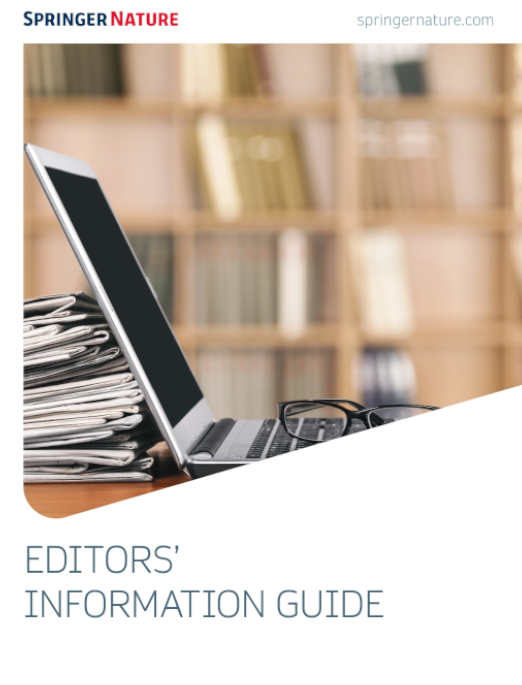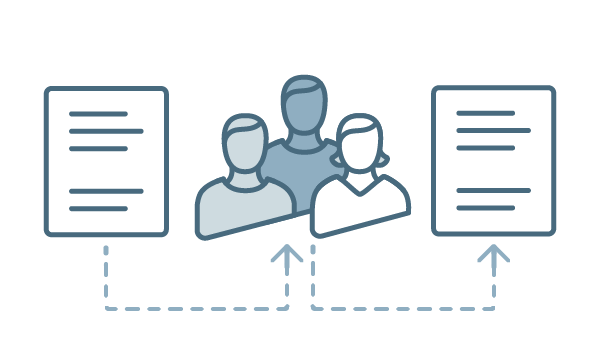A Guest Editor is responsible for overseeing a collection, including managing the review process, promoting the collection to researchers, soliciting content, and upholding editorial standards. Collections are a valuable way for journals to highlight exciting or emerging areas of research by grouping related articles. More information on collections can be found in this Publish to a Collection article.
Overview of the Guest Editor role
The activities carried out by a Guest Editor may include:
- Defining the scope and topics of interest for the collection.
- Inviting potential authors with expertise in the collection topic to submit their paper.
- Assessing scientific validity and topic relevance of all papers published in the collection.
- Managing the peer review process for the collection efficiently and with integrity.
- Ensuring that the collection adheres to the relevant standards of both the field and the journal in which it is published.
- Making recommendations to the Editor-in-Chief on which papers to accept or reject.
- Writing an Editorial to introduce the collection.
- Promoting the collection by reaching out to relevant academic communities
Ethical responsibilities
Guest Editors help promote and support ethical practices in publishing by adhering to the Ïã¸ÛÁùºÏ²Ê¹ÙÍø Code of Conduct for Editors and . This includes:
- Ensuring that peer review and decision-making process is rigorous and unbiased, for instance by choosing peer reviewers with appropriate subject matter expertise and monitoring for potential conflicts of interest.
- Disclosing any potential conflicts of interest to the relevant Publishing contact. We define conflicts of interest for an Editor as having any interests that may influence or may be perceived to influence, their decisions as Editor. More information can be found here.
- Respecting and upholding the confidential status of materials submitted to the Journal and ensuring that material remains confidential while under review.
- Confirming that manuscripts accepted for publication comply with the Journal’s editorial policies and specific research requirements and ethics standards for the relevant field. 
- Cooperating with the Publisher if complaints, appeals, and post-publication issues relating to the collection arise.
Advantages to being a Guest Editor
Collections offer many benefits for Guest Editors, for instance:
- Increasing their visibility as a Subject Matter Expert in their field and more generally through targeted promotion of the collection and wide readership. They will be named on the Collections page on the journal homepage and the Call for Papers. 
- Growing their research network by collaborating with distinguished authors, reviewers, and scholars worldwide. 
- Gaining experience in handling manuscripts and collaborating with a journal, which establishes a relationship of trust with the journal Editors. 
- Having the opportunity to write an Editorial for the journal they partner with as a Guest Editor.
- Collections may be tied to one of the UN’s Sustainable Development Goals, thereby enhancing visibility of the Guest Editor’s work and contributing to global societal benefit.
- Collections have high visibility and may contribute to higher readership of the topic at hand.
How to become a Guest Editor
Ïã¸ÛÁùºÏ²Ê¹ÙÍø invites researchers to contribute as Guest Editors for our collections. A potential Guest Editor will be identified as an expert in their field of research and invited directly by one of our editors.
- After agreeing to edit a collection, Guest Editors will be asked to familiarize themselves with the Journal’s editorial and publishing policies and may be asked to help define the scope and topics of interest for the collection.
- Guest Editors will be onboarded and receive support throughout the collection lifecycle in the form of:
- Direct contact with a member of our in-house team
- Resources that provide guidance on both the day-to-day aspects of your role and the support available.
In some cases, unsolicited collection proposals may also be submitted to the Journal directly. All proposals will be reviewed by the Journal Editorial team. Please refer to the Journal’s policies and procedures before submitting a collection proposal.
Additional resources
If you need to refer to Ïã¸ÛÁùºÏ²Ê¹ÙÍø policies regarding best practices, code of conduct, and DEI (Diversity, Equity, and Inclusion):









